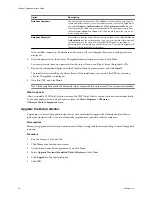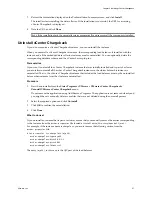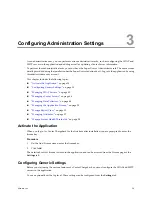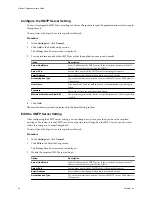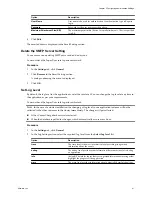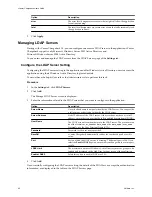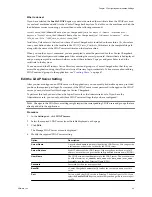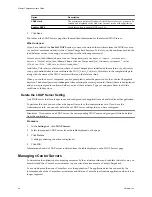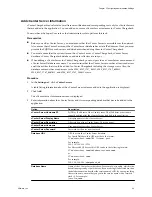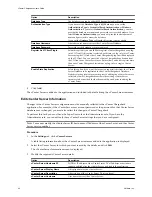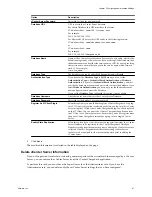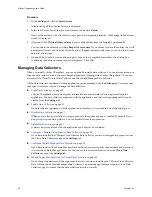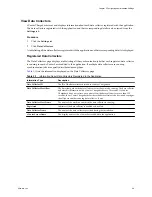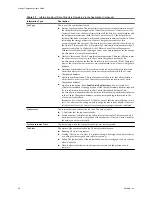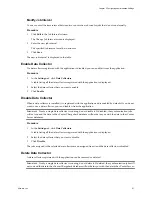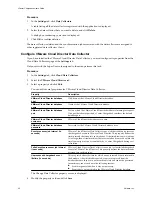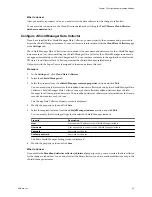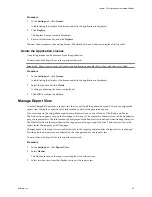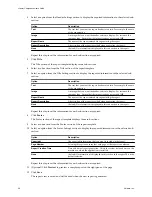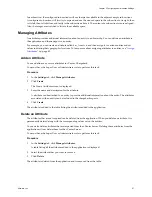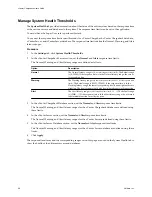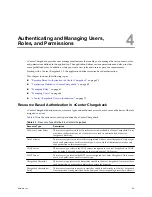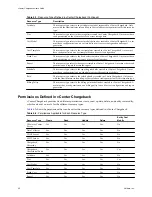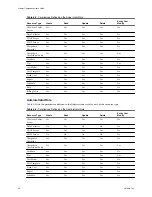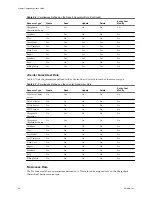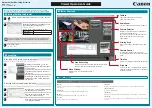
Table 3-1.
Information About Data Collectors Registered in the Application (Continued)
Information Type
Description
Job Type
The type of the synchronization job.
n
Storage Synchronization: The data collector obtains the storage information for all
the virtual machines managed by the VirtualCenter Server or vCenter Server. For
vSphere 4.0 and later, the data collector fetches all the files of a virtual machine and
the datastore information of each file. For vCenter Server 2.5, the data collector
fetches all the disks of a virtual machine and the datastore details of each disk. When
calculating the storage utilization, vCenter Chargeback accounts for thin
provisioning and linked clones. The first run of this job might fail if the first run of
the Hosts & Clusters and VMs & Templates Synchronization job takes more than 5
minutes to complete. In vSphere 4.0, the VMware VirtualCenter Management
Webservices service must be running on the vCenter Server machine for the storage
synchronization to complete successfully.
n
Hosts & Clusters and VMs & Templates Synchronization: The data collector copies
the vCenter Server inventory in to the vCenter Chargeback database. This
synchronization job ensures that the Hosts & Clusters view and VMs & Templates
view of the vCenter Server inventory are synchronized in the vCenter Chargeback
database.
n
Datastore Synchronization: This synchronization job ensures that all information
about the datastore view of the vCenter Server are synchronized in the vCenter
Chargeback database.
n
Network Synchronization: This synchronization job ensures that all information
about the network view of the vCenter Server are synchronized in the vCenter
Chargeback database.
n
Stats Synchronization: If the Enable Stats Replication option is selected for a
vCenter Server added to the application, all the vital performance statistics required
for cost calculation is replicated in the vCenter Chargeback database. This
synchronization job ensures that the statistics information is periodically replicated
in the vCenter Chargeback database with the corresponding information in the
vCenter Server database.
I
MPORTANT
For vCenter Server 2.5 Update 3, ensure that the stats collection level is
set to 2 or above for the average memory usage counter to be available. If the stats
collection level is set to 1, the cost for actual memory usage cannot be calculated.
Job Interval
The interval between consecutive job runs. The values can be:
n
-1: Indicates that the job runs eternally.
n
Positive number: Indicates the repetition interval in minutes. The consecutive job
starts n minutes from the completion of the earlier run of the job, where n denotes
the value you enter in this field.
Last Synchronize Time
The time stamp when the synchronization job was last completed.
Job State
The status of the synchronization job. The displayed values are:
n
Running: The job is in progress.
n
Waiting: The job is yet to start. It is either waiting to be assigned to a data collector
or waiting for the assigned data collector to start it.
n
Failed: The job has failed. If the job has failed, the job is reassigned to a data collector
after 10 minutes.
n
Done: Refers to jobs that are run at specific intervals and the previous run is
complete.
vCenter Chargeback User’s Guide
50
VMware, Inc.

